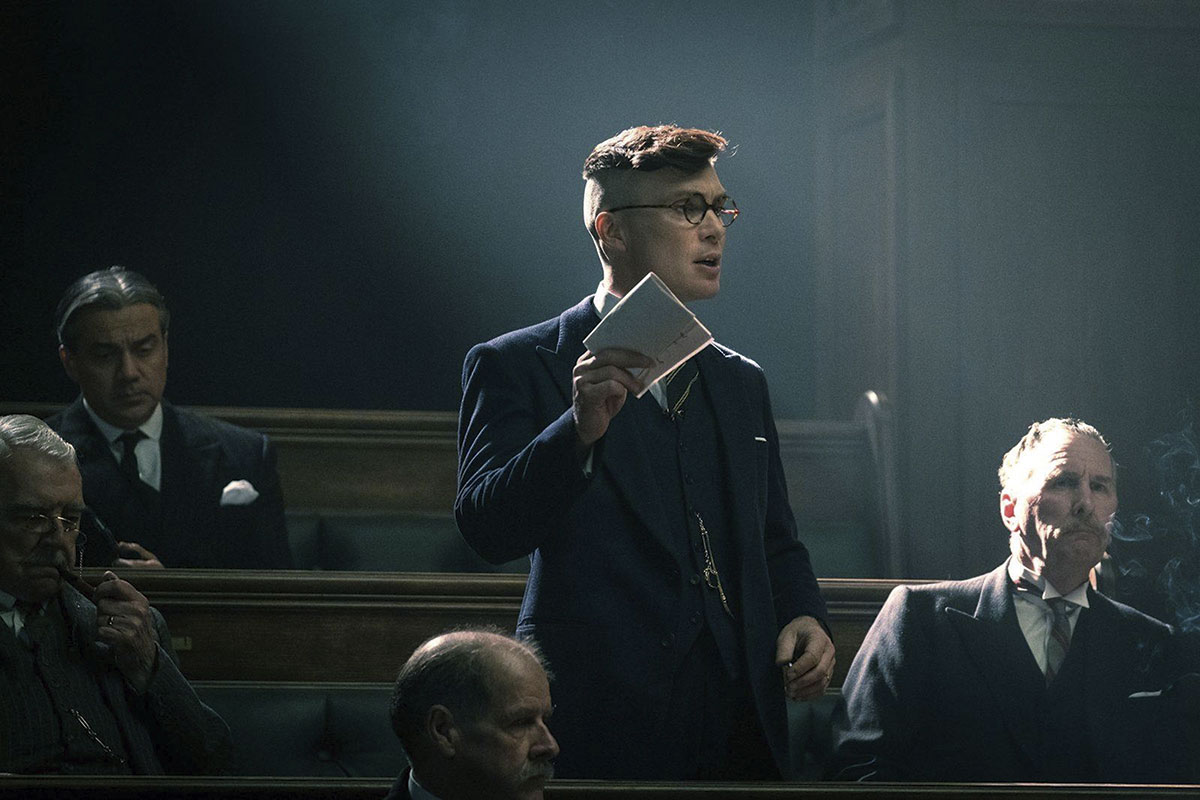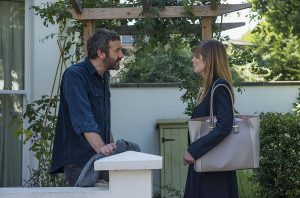
After more than 35 years of operation, TBI is closing its doors and our website will no longer be updated daily. Thank you for all of your support.
Inside the multimillion-dollar drama trap
Producing high-end scripted product has never been more lucrative, nor more risky. Richard Middleton explores how producers and distributors are balancing their options
Netflix CEO Reed Hastings might have sent his company’s share price down 6% last month when he alluded to the “whole new world” emerging in streaming, but a more populated SVOD universe is something scripted producers and distributors have been awaiting for some time.
Entrants such as Apple TV, Quibi and HBO Max are just three deep-pocketed entrants poised to join incumbents Amazon and Netflix in what is fast becoming a crowded SVOD market, with scripted a key part of the play. And then there’s the broadcasters, which are just about managing to keep pace in an increasingly pricey sector.
But unlike in the early days of SVOD, this growing gaggle of buyers have been shifting the tectonic plates of the global drama business by offering a variety of disparate models. While broadcasters by and large remain unable to shift their budgets, those making and selling the content are adapting accordingly with drama financing models quickly changing as a result.
“Not long ago, the ideal template used to be getting a greenlight from your broadcaster, who would fund something in the region of around 70% of your budget,” reminisces Hakan Kousetta, COO at State Of The Union and Top Of The Lake prodco See-Saw Films.
“We did Anna K with HBO Max because we really love that project. WarnerMedia only wanted domestic US rights so we could keep international” Stuart Baxter
“Then there’d be a tax credit of around 17-18% and then a distributor would offer 10-12% of your budget. And there it is, that’s your fully financed show.”
How times have changed. As streamers entered the market, costs began to skyrocket and broadcasters have struggled to keep up.
“Over the last few years, shows have almost doubled in price so it just doesn’t work anymore,” Kousetta continues. While you might be able to get the same subsidy – or more, if you pick the right country to produce in – broadcasters’ budgets have remained static, he says, meaning they tend to offer around 35% of a budget.
“And that means you need another broadcaster.”
This is the path See-Saw has chosen for 10-part euthanasia drama The End, which is set in Australia and the UK. It will air on Fox Showcase on Foxtel in Australia and Sky Atlantic in the UK and Ireland, as well as on streaming service Now TV, with Endeavor selling globally.
“Most independent producers are finding that there are two ways to go in this market: you can get a global SVOD commission and that is then generally a single source of financing and can pay sufficiently to meet the rising costs of production and talent,” Kousetta says.
“The other is to get a non-SVOD commission but the challenge, as everyone knows, is they don’t have enough money to match what the SVOD pays. And that means for people like us, we have to look at co-commissions to secure sufficient funding to make the show at production level.”
It is a similar story from Caryn Mandabach, who says she left the US for the UK to gain greater ownership on shows. She now operates Caryn Mandabach Productions (CMP) and one of her standout series, Peaky Blinders, has become a hit for the BBC and Netflix, which offers it in the US.
The series is into its fifth season but Mandabach says surging costs are making life tough for broadcasters and producers alike. She admits the BBC in the UK is the “greatest platform if you can possibly afford it” but adds that the problem is “there are so many forces against you”. Central to these has been its inability to increase budgets and compete with US entrants.
Yet as Mandabach suggests, broadcasters can still offer a major platform for marketing a show and they normally offer development funding too, something that Kousetta says is “crucial”.
“Most broadcasters are healthily funding development. They understand the value of that and it is a godsend in terms of getting shows away,” he adds. “It is a big risk to spend that sort of money – and we do it sometimes, we have to make that choice – but if a broadcaster likes your idea, the concept and the writer, then normally they will be happy to fund development.”
Mandabach and Kousetta both agree, however, that financing high end TV drama is now increasingly reminiscent of the way independent films are put together – and if it involves a broadcaster, the chances are that the deficit will be large.
To date, distributors have tended to step into the void and take increasingly big risks to ensure projects can get off the ground, as highlighted by Entertainment One’s president of international distribution Stuart Baxter, whose company sells shows such as ABC drama The Rookie and Upright, from Australia’s Lingo Pictures.
“Deficits are absolutely growing because the costs are escalating and the amounts being paid by broadcasters aren’t going up,” he explains.
“This has increased the need to find early partners for those more expensive pieces in the form of co-productions,” adds Cathy Payne, chief executive at Endemol Shine International, which has sold shows such as Black Mirror to Netflix. “Higher budgets also bring increased focus on extracting value from subsidy financing and cashflow facilities.”
Baxter says he breaks the current options to get shows off the ground into three categories. “There’s the model where you produce a show with low risk for a streamer or network [that takes all rights] such as we did with Sharp Objects and Run with HBO,” he says.
“We currently have other projects with Amazon and Apple with that model and it guarantees you revenue, a certain amount of profit and means everything is covered. It’s great but the upside on that project is capped and limited.”
“I know a few shows that should have done bet
ter but just didn’t. And it isn’t because the show is bad – it’s because if you’re a Northern European buyer, you now have 50 shows to choose from rather than five.” Hakan Kousetta
Yet while Baxter admits it is good to have a smattering of such deals, he adds that he “wouldn’t personally want to have a production company that only had those types of shows on its book”. The days of Netflix covering production costs plus 30% are by and large gone.
“You get a small return but how do you cover development for other shows and your overhead costs?,” he continues. “You don’t. The model is great to have but it is only part of the formula”.
Model two involves a more traditional commissioner-led approach. “If we are really happy with the size of the deficit – well, not happy, but if we accept that the risk and reward is in balance, even with a growing deficit – then we have two choices: either take it to market or do one or two presales which will mitigate that risk; or take it to a streamer, such as ITV Studios did when selling BBC drama Bodyguard.”
Then there is model three, “when we develop a show right from the beginning, creating the series, packaging it and generating scripts, securing talent and producers. And we obviously fully believe in those shows.” A commissioner is found and the product can then be sold globally or territory by territory, as happened with Anna K, which is with HBO Max.
“We did it with them because we really love that project,” Baxter continues. “We had offers from broadcasters and streamers but WarnerMedia only wanted domestic US rights so we could keep international and some of the upside. And that’s why we went with them.”
How that changes if and when HBOMax goes global remains to be seen, but it is clear that SVOD models are changing and there is no such thing as a typical deal. Some, such as Amazon Prime Video, are more open to regional co-productions for example and Payne says their approach to deal-making has “matured” in line with their offering.
“They are flexible in how they approach projects: they will have the bigger global properties that are clearly a global play, compared to other commissions that may be clearly more focused on how they perform in their domestic market.”
Regional SVODs are also offering opportunities: earlier this year, Kew Media Group struck a deal with Nordic-focused Viaplay to produce Margeaux, which explores the 1972 Munich Olympics massacre from the points of view of an Israeli Mossad psychologist and the Palestinian coordinator behind the attack.
The show is ambitious – it has Adi Hasak attached to write and produce – but Kew’s EVP of global scripted series Carrie Stein says it makes sense financially.
“There are new models. With Margeaux, we are 50/50 partners and we are co-funding the series. It isn’t $3m an episode, it’s more like $1m partly because we’re shooting in Israel and Eastern Europe and we’ll follow the Israeli model for making their dramas a bit more.”
It’s not just that production costs less, though, Stein says. Rather, it’s a “well-oiled machine” that locks in scripts early and ensures actors are on set for less time by encouraging longer rehearsals. “Then when we are all on set they know exactly what they’re doing.” And partnering with Viaplay means Kew, which is selling the show globally, will also get back end.
“There are different models for different projects,” adds Kousetta, whose company has worked with all the major players in one form or another. “It really has evolved recently and they are all offering different structures. There is none of that cookie cutter-type of deal from the early days, it depends on the project and the longevity.
“There will be one deal for a single-run, closed ended series that is very different to something that could go and go. And then it is very different if you are bringing big talent to the table – you have the leverage there to get different structures.”
But there are also concerns that as the business becomes increasingly vertically integrated, the options for non-affiliated producers will be limited. With US studio-backed streamers striking overall deals and streamers increasingly look to tie up talent, too – recent examples including Netflix and Shonda Rhimes and Amazon and Phoebe Waller Bridge – some suggest the ecosystem could be closing in.
“There is this amazing vertical integration with content, telecom and tech companies,” says Homeland co-creator Howard Gordon, who recently agreed a deal with Sony Pictures Television, which has not yet entered the direct-to-consumer game. He highlights the “big grab for talent from those verticals” but also poses the question of “how many layers down” that goes.
“How long can a studio tie-up a low or mid-level writer and keep them from working on other things? Will there be a universe where Netflix has its five tiers of deals and you wear a Netflix jersey, or you wear an HBO Max jersey?” he questions.
The implications of this for producers and the industry as a whole is clear but Baxter points back to the pre-streaming days, when networks were “incredibly” dominant. “They were vertically integrated too, they’d have their shows produced by their own studios but guess what, we were still making shows for ABC.”
Payne adds: “While the US studios will be focused on supplying their DTC streaming services, in particular for the first exclusive cycle/window, it is likely they will maintain a balanced production slate.
“The US studios have always been agnostic in that not all their output is exclusively for their own services. They will still apportion value to all forms of rights exploitation and will exploit rights outside of their OTT services during the life cycle of a property.”
And with numerous entrants set to storm the market, Baxter believes the drama business as it stands is sustainable for the next three years at least. Other execs, who did not want to be named in this feature, said the real impact would be on Netflix, which will be forced to further shift its strategy and its stance on rights as competition surges. Some suggested this increased flexibility has been a long time coming.
But while competition for product is growing, so are budgets and deficits on broadcaster-led projects. It is a point that Kousetta expands on, because as deficits increase for distributors, the options available to producers also change.
“The distribution model is very tough,” the See-Saw exec says. His company has eschewed any tie-ins with distributors to date, instead picking partners on a project-by-project basis, but he believes the days of increasing deficits will not continue.
“It will be hard for them to put up as much money as they did in the past and that will be a reality in the next few years – there will be a cutting back on that,” he predicts.
Several execs, who also did not want to be named, are clear that they believe the sums do not add up and will cause serious problems soon because every deal is now based on a show going gangbusters, rather than simply selling well. Others privately admit that the sheer amount of content is posing problems for distributors, with companies burned after laying out healthy advances for shows that then failed to recoup the investment in sales.
Kousetta adds that he too has seen the distribution model creak under the strain of surging deficits, even though demand for shows is high.
“Yes, they are selling shows but some that they might have counted on selling really don’t do quite as well now as they should have done because there is so much more competition. The quality bar is going up and quite a few distributors have been caught out as significant advances have been put up but they haven’t made the returns that those advances should have justified.
“I know of a few shows where that has happened, where it should have done better, but it just didn’t. And it isn’t because the show is bad – it’s just because if you’re, say, a northern European buyer, you now have 50 shows to pick from rather than five. That is the reality.”
It is also partly why distributors have been taking stakes in production outfits, securing product and taking more back end, but like Kousetta, numerous execs in the scripted business TBI has spoken to think deficits have to stabilise or even decrease.
Payne says: “Our rule of thumb is that we require our primary commissioning broadcaster/platform to be locked before we secure the production deficit, in particular for larger-budget scripted.
“Any primary commissioning broadcaster/platform will want to be locked in early for a variety of editorial and business reasons – I don’t believe funding scripted deficits and then securing partners retrospectively is sustainable at all.”
But if distributors become averse to funding such large deficits, how will non-SVOD shows get made? Some suggest the slack will be taken up by media-focused finance houses, a view Kousetta subscribes to – but there will be costs attached.
“The prospects for producers not being commissioned by SVODs is increased cost. It means more financing, which means more financing costs, and that equals less profitability. But that is definitely not the end of the world – it’s just a change in the shape of the business.”





